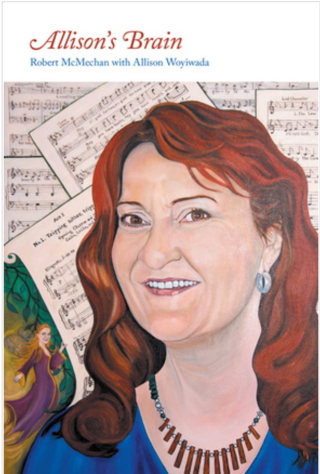Education
Learning about Allison's Brain
How music helped one woman's post-brain surgery healing
Posted March 24, 2016

I heard a pretty remarkable story last week about a woman named Allison. Allison is a retired music teacher—a highly decorated retired music teacher, too. In 2011, Allison was diagnosed with a brain aneurysm, an enlargement of one of the arteries in her brain. An enlargement so big it was the size of a plum. Allison underwent brain surgery to clip the aneurysm, then endured several years of therapy to regain her cognitive, motor, and communication functioning.
What’s remarkable about this story is that it was shared by Allison herself. Allison Woyiwada and Robert McMechan co-wrote Allison’s Brain, a memoir of her journey from aneurysm to recovery, and they share Allison’s story through radio interviews, keynote speeches, and other presentation venues.
The other noteworthy element—particularly for the music therapist in me—is the role music had in Allison’s rehabilitation. Music played three primary functions as shared in her story last week:
- Music was a part of Allison’s environment while she was in a medically-induced coma. Given Allison’s history as a music teacher and performer, her family brought in some of her favorite music to play in her room. Although this particular act was done instinctively, there is some evidence that individuals in a coma—or more specifically individuals with a disorder of consciousness—still emotionally process auditory information (Rollnik & Altenmüler, 2014). As such, it seems reasonable that playing someone’s preferred music may have some therapeutic value (as an aside, a whole music-based assessment tool has been created that uses music to assess awareness in disorders of consciousness).
- Music functioned as an assessment of Allison’s ABILITIES. Recovery began slowly following the surgery and her time in a medically-induced coma. Allison shared that she missed several weeks of her life—she was told about visitors she had and things she had done, and would have no recollection of these events. Her motor skills were impaired, and she underwent daily therapy to re-learn how to walk, control her fine motor skills, and strengthen her gross motor ones. Allison was also unable to speak at this time, so doctors were unable to assess the extent of her cognitive abilities, what was impaired and what was intact or otherwise. Until the day that Allison passed a piano with sheet music propped on the stand. Then her love of and training in music kicked in. Allison sat down and began playing. It wasn’t perfect, but the same fingers and hands that could not hold a fork and bring food to her mouth were playing the melodies and chords on the music. This event—which incidentally was caught on camera—offered the first clue that Allison still had intact and functional motor and cognitive abilities.
- Music played a vital role in Allison's speech and language rehabilitation. According to Allison and Robert, her cognitive and motor skills bounced back quickly, but speech functioning took a little longer (the brain aneurysm directly affected the parts of the brain responsible for speech production and comprehension). Allison had been discharged from the hospital, and was continuing to work with a speech therapist. But according to Allison, real progress in her speech functioning began after she began working with a music therapist who implemented a technique called Melodic Intonation Therapy. This particular technique is designed to help individuals with nonfluent aphasia, a type of language disorder characterized by impaired speech production and/or speech comprehension. MIT can be utilized by either music therapists or speech-language pathologists, and involves the use of singing as a way to engage undamaged language networks and retrain speech production (click here to learn more about this therapeutic technique). Under the care of the music therapist and the benefit of MIT, Allison’s speech skills soon began to improve…so much so that she presents with ease.
There’s more to Allison’s journey than what has been shared here. Click here to learn more: http://www.allisonsbrain.com/
Follow me on Twitter @KimberlySMoore for daily updates on the latest research and articles related to music, music therapy, and music and the brain. I invite you also to check out my website, www.MusicTherapyMaven.com, for additional information, resources, and strategies.
References
Rollnik, J.D. & Altenmüller, E. (2014). Music in disorders of consciousness. Frontiers in Neuroscience, 8, 190. doi:10.3389/fnins.2014.00190
Magee, W. L., Siegert, R. J., Daveson, B.A., Lenton-Smith, G., & Taylor, S. M. (2014). Music therapy assessment tool for awareness in Disorders of Consciousness (MATADOC): Standardisation of the principal sub scale to assess awareness in patients with Disorders of Consciousness. Neuropsychological Rehabilitation, 24(1), 101-24. doi:10.1080/09602011.2013.844174
Norton, A., Zipse, L., Marchina, S., & Schlaug, G. (2009). Melodic Intonation Therapy: Shared insights on how it is done and why it might help. Annals of the New York Academy of Sciences, 1169, 431-436. doi:10.1111/j.1749-6632.2009.04859.x


